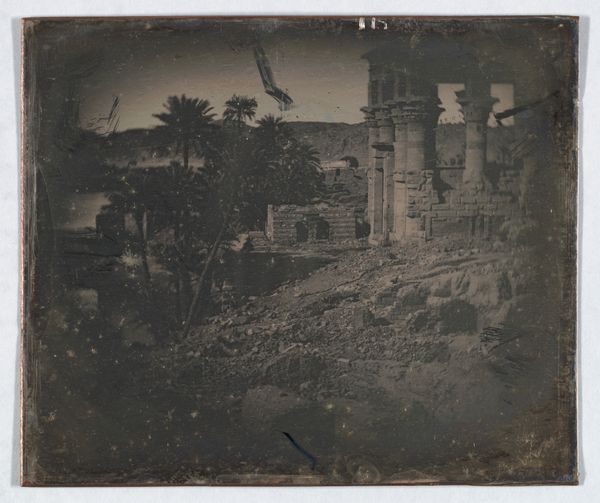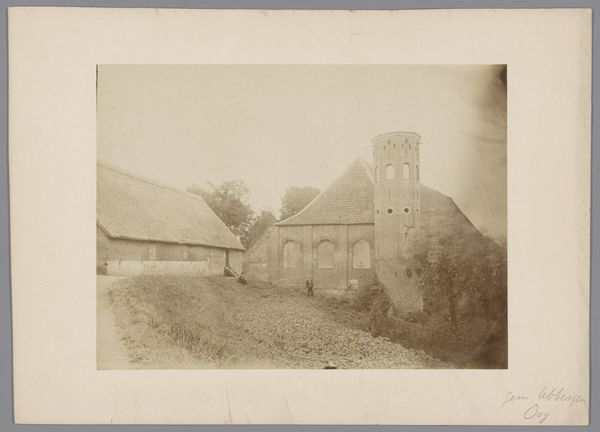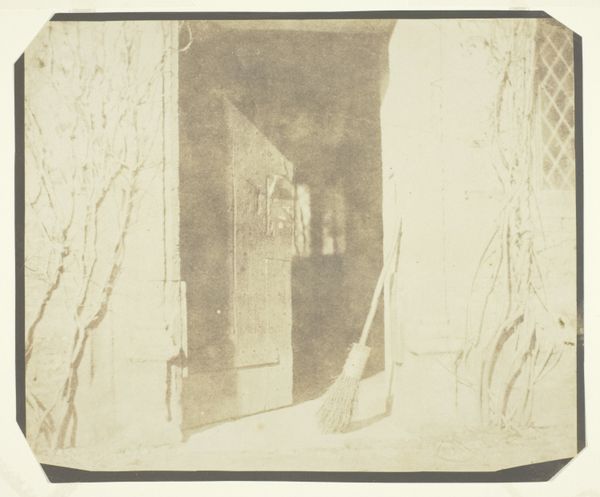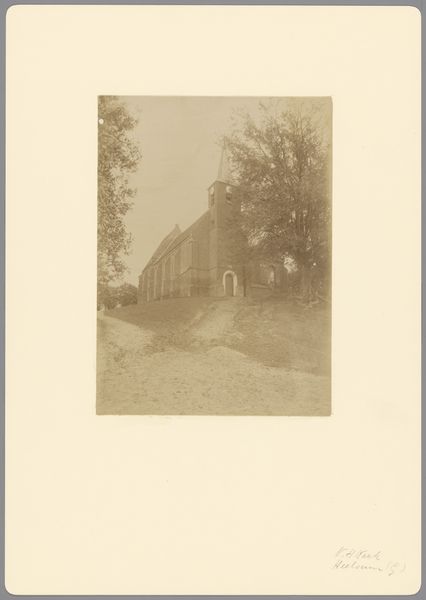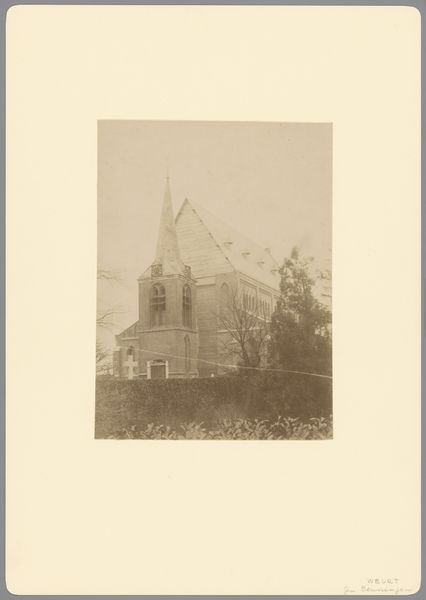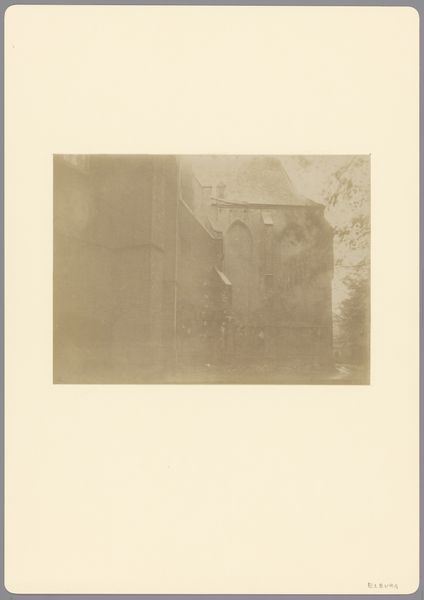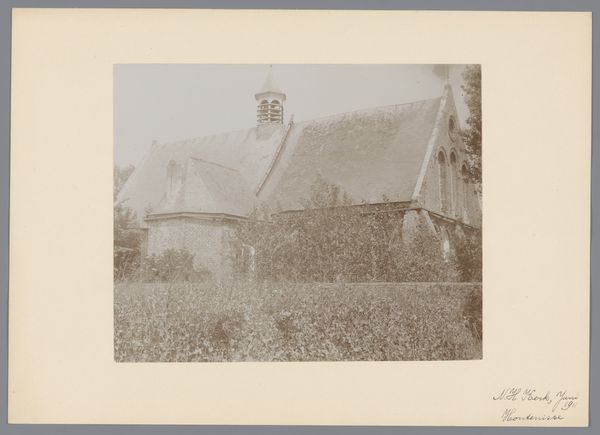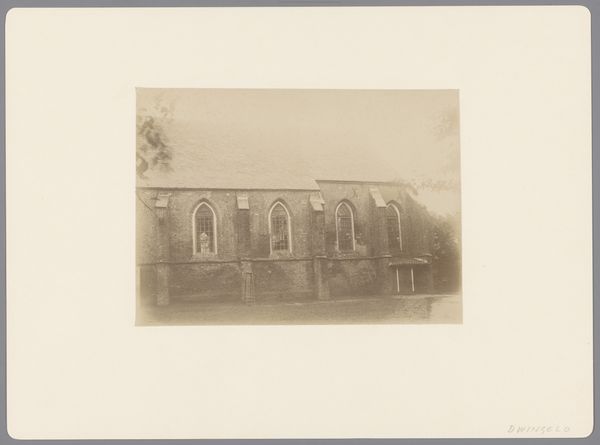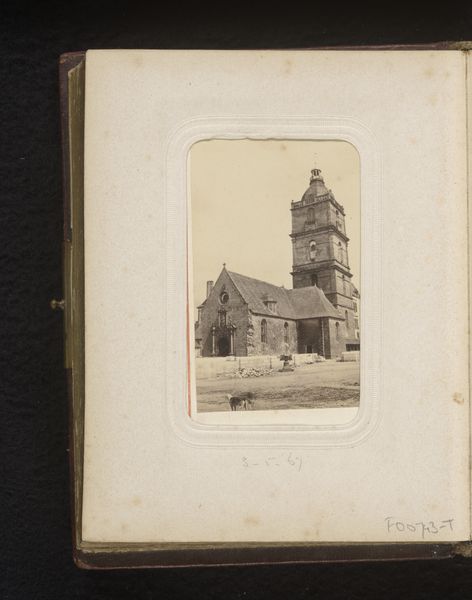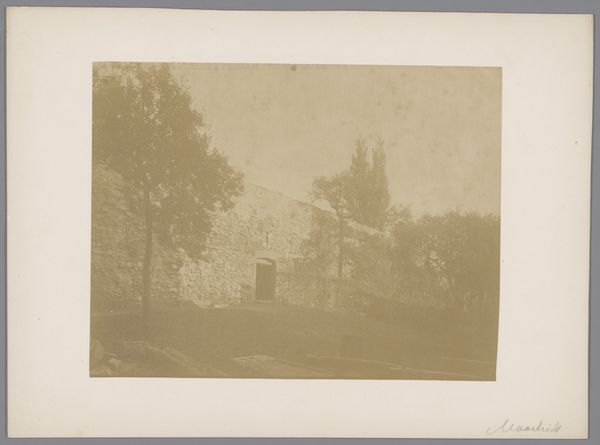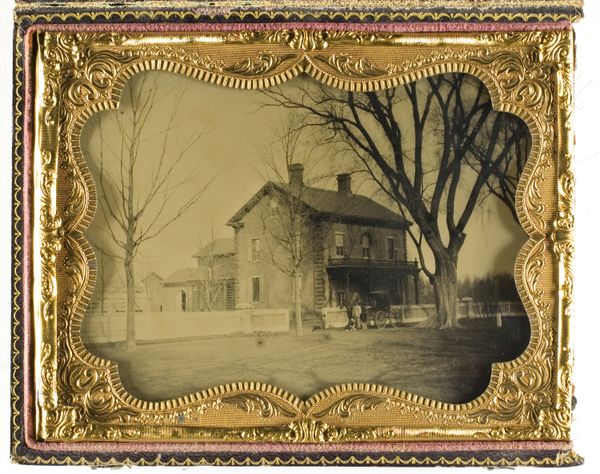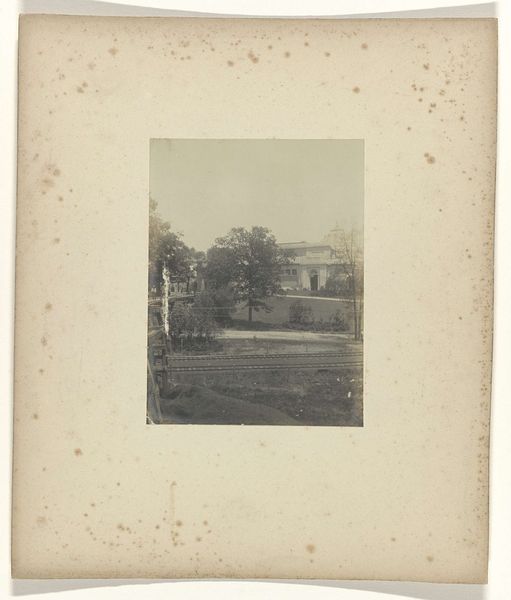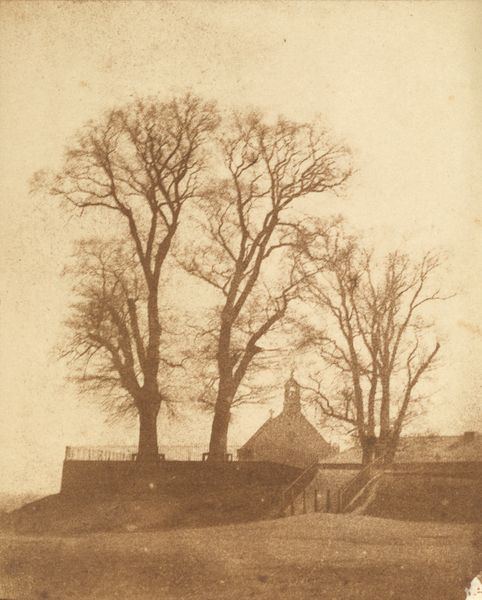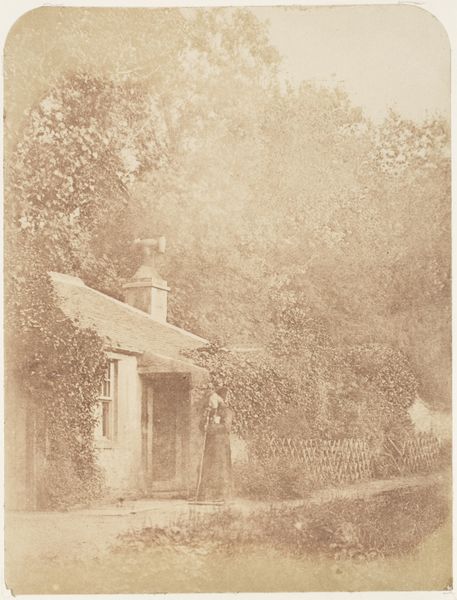
Apse, Basilica San Pietro, Toscanella (Tuscania) (43. Toscanella. Eglise de S. Pietro. Apside.) 1842
0:00
0:00
daguerreotype, photography, architecture
#
landscape
#
daguerreotype
#
photography
#
romanesque
#
carved into stone
#
earthy tone
#
ancient-mediterranean
#
arch
#
architecture
Dimensions: Image: 3 3/4 × 3 1/8 in. (9.5 × 8 cm)
Copyright: Public Domain
Curator: This is a daguerreotype from 1842 by Joseph-Philibert Girault de Prangey, depicting the Apse of the Basilica San Pietro in Toscanella, Italy. It's an early photographic image of Romanesque architecture. Editor: Immediately, it strikes me as an image steeped in time. The tonal range gives it an antique feel; the Basilica is solid, like it's always been there. There’s something stoic about it, don't you think? Curator: Absolutely. The Romanesque style is, by its nature, heavy and enduring. The photographic medium adds to this sense, doesn't it? Girault de Prangey's choice of daguerreotype perfectly captures the Basilica's ancient and imposing character. It really emphasizes its solidity and permanence through earthy tones. Editor: You nailed it. The hill on which the church sits only adds to the powerful first impression it provides. Did people respond to architecture differently after seeing images like these? What were people looking for in religious artwork in that period? Curator: This is so significant because it makes this sacred space much more accessible than any earlier image, and more democratic in a sense. This type of early photography created new visual traditions around architecture in the Romanesque period. Think of this image carrying a psychological weight. People began building entire world views from visual images such as these. The ability to replicate, disseminate and recall an image would affect architecture and art. Editor: I agree! Something about the Basilica suggests it almost merges with the hill, as if it sprung out naturally. A solid image rooted into place, holding steady with age. Even for people from an older period it suggests there is something ancient in its imagery. Curator: Yes, it evokes a sense of timeless continuity and history. It’s really about the endurance and spiritual foundations it’s built on. Editor: It is fascinating to imagine the countless changes this basilica has seen, while holding steady throughout history, documented forever by de Prangey's lens. Curator: The work invites us to think about memory, continuity, and the role of enduring architecture in anchoring human experience across generations. A pretty striking way to look back, I would say.
Comments
No comments
Be the first to comment and join the conversation on the ultimate creative platform.
